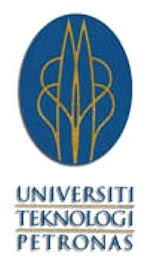Wednesday, April 1, 2009
OBJECTIVES
HOW IT WORKS?
ADVANTAGE
- Barcodes use in the intelligent book finder system uses EPC over UPC.
- The chip that is used is a tiny computer that stores a series of numbers unique to that chip itself.
- The antenna in the chip and at the bookshelves can receive power, communicate and enables the RFID tag to exchange data with the reader.
- The passive RFID tag is tiny size compared to the active RFID tag.
- The passive RFID tag is more economically affordable compared to the active RFID tag.
- The chip has the logic to tell itself what to do when it is in front of a reader
| EPC | UPC |
| 1. Contains more information: a) Header
b) EPC Manager Number
c) Object class
d) Serial number
| 1. Contains only information of the manufacturer and the product codes. a) First partition
b) Second partition
c) Next five digits
|
| 2. It stores a lot more information. | 2. It stores less information. |
| 3. The total data-carrying capacity of an EPC number is from 32 to 256 bits long. This means that EPC can accommodate millions of trillions of possible number. | 3. UPC can only accommodate 100,000 possible numbers. |
Comparison between Bar Codes, Contact memory, Passive RFID and Active RFID
PROBLEM ENCOUNTERED
Although there are ISBN, index numbers at the back page of the book’s cover and even with the help of librarian, finding a desired book in a huge library and book stores where many books are placed together at the bookshelves is a time consuming task. When the particular index number of the book wanted have been found using the system available in most of the libraries and international bookstores nowadays, some books are misplaced and cannot be found in their original place at the bookshelves. Librarian or the reader need to search for the book all around the place and this takes up a lot of time and energy. The most annoying thing is time is wasted and the books the reader wanted cannot be found.
2. Books being misplaced.
Librarians have taken a lot of efforts in making the books at library to be easily found by readers. Unfortunately, there are still some irresponsible readers that do not put the books back at the original place at the shelves after reading it. This causes a lot of difficulties to the librarians and also the readers in finding the exact location of the books needed.
3. Readers are unable to find the books in the original place at the bookshelves.
There are cases where books that have been just returned are not being put back at the original place at the bookshelves. There are also cases where books are been hidden by some selfish and irresponsible readers at some places so that they are the only ones who can gain access to the book. Other readers are unable to borrow or use that particular book because the book cannot be found anywhere near or at the original place.
4. Unable to locate the books that have been gone or damaged.
The books that have been badly damaged until it cannot be recognized anymore can still be found by the librarian to mend it so that the book can still be reused as a reference to the readers. The library does not have to purchase the same new book as the damaged one as it will cause the library a huge loss. Due to inefficiency, sometimes the books that are in the process of mending are still marked as available by library archive. Readers that do not know that will definitely have a hard time searching for the books.
RECOMMENDATION AND CONCLUSION
The Intelligent Book Finder project has many advantages and potential yet to be discovered. It is convenient for an institution as they are using less time in searching for a book and more time for researching and improving their services. It is also convenient for an individual as they will be having more time for other works if the book can be found in a short period of time. Thus given the opportunity to do such research and expand that vision is an honour. Although the idea has been created and the technology is possible to be applied, how to make the project feasible in library environment are still challenges that are waiting to be solved.
REFERENCES
2. Patrick J. Sweeney, RFID For Dummies, 2005, United States of America, Wiley Publishing (page 1)
3. Patrick J. Sweeney, RFID For Dummies, 2005, United States of America, Wiley Publishing (page 11-15)
4. Patrick J. Sweeney, RFID For Dummies, 2005, United States of America, Wiley Publishing (page 20-21)
5. Patrick J. Sweeney, RFID For Dummies, 2005, United States of America, Wiley Publishing (page 70-71)
6. Patrick J. Sweeney, RFID For Dummies, 2005, United States of America, Wiley Publishing (page 110-112)
7. Christine Spivey Overby, RFID: The Complete Guide, 2005, Forrester Research Incorporation (page 6)




